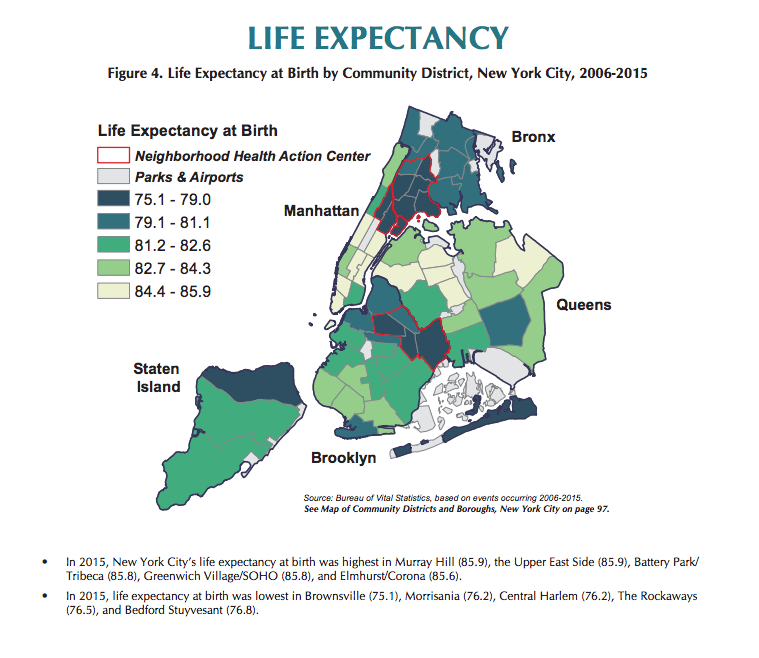Health = Wealth
California Newsreel (Writer). (2006). In Sickness and in Wealth (Episode 1) [TV series episode]. In Unnatural Causes. Kanopy.
This documentary seeks to uncover the truth behind why the United States can be one of the top economic and industrialized nations in the world and as a nation spend half the healthcare dollars in the world, but be one of the most unhealthy and have a shorter life expectancy than thirty other countries. Numerous studies show an extremely high correlation of the cause of this-an extreme health and wealth inequity balance. The episode shows that this relationship does not falter between two lines of rich and poor, but it is a gradient relationship that can be clearly tracked and observed as people get wealthier, they get healthier and live longer, and as people have incrementally less income, they become incrementally less healthier, and their live expectancy also intermittently drops. The interdependence is strong and striking and can be seen through the lens of various studies and socioeconomic variables including income, education level and even amount of years spent as a child in a home owned by your parents. Another way epidemiologists have framed and studies the association between health and wealth is by looking at twins who were brought up the same for the first eighteen years of their life, and then diverged socioeconomically as adults and developed differing health profiles dependent on their income level despite genetically similar foundations. One such study was cited in the article, and
another study on twin life expectancy variation based on education level is offered here.
The linkage between health and wealth has been clearly established in the video through an abundance of citations of studies and experts in the profession, and therefore the question which Anna Diez-Roux, an epidemiologist from the documentary asks, is why is there no policy to change this problem which can be so causally linked? In fact, Diez-Roux states that at this point the continued progression of the problem is coming from a complete lack of policies, and as Sr. Michael Marmot states in the episode, this problem is not fixed or natural and by looking at history we can see that health can be improved by policy. So this begs the question-why are there no zoning laws or caps on fast food restaurants in low income neighborhoods, or initiatives to bring in larger super markets and mixed income housing? Possible explanations point to power-that those who have the power to put these initiatives in place are often the same ones benefiting from the power inequality in the first place, and therefore don't want to change it. This reminds me of the culture of power which exists in society which Lisa Delpit (1988) cites and discusses that in our schools in order to remediate and unhinge this power we need to first understand how and why it exists, and then spread the power around, which by listening to Duncan-Andrade (2007), one way we can do this is to make sure we include all voices at the table to foster critical hope, and therefore if these voices are present, the policies to enact the change to fix the health and wealth imbalance have a chance at being enacted. The image and study cited below provide another example of why this change is so critical, because although the magnifying class for the purpose of this documentary was zoomed into Louisville in 2006, if you zoom to another city, the same tragic pattern exists.



Hi Sarah,
ReplyDeletePrior to watching this documentary, I was someone who never realized that there are factors other than genes that play a role in a person's overall health. After watching the documentary, my eyes were opened to the unfortunate reality that there are so many other factors that play a role in our life expectancy and health. I found the study about twins to be particularly interesting when watching. The fact that twins who lived together and had the same experiences for eighteen years of life then separated and had different medical histories was shocking. I never truly realized how much social class, education and income could alter a person's overall health. I appreciate how you used an example from another popular city to show how life expectancy is different based on location and social class. Looking at the figure of New York City helped me understand even more just how the inequalities people are experiencing truly affects their overall health.
Hi Sarah,
DeleteI was stunned to learn that the United States was responsible for almost half of all global spending on healthcare but only ranked 30th in life expectancy. America is so often said to have some of the best hospitals in the world, which may be true, but one thing that the documentary brought home was that fact that these hospitals are the exception and not the rule. Considering Chibber's article about the inherent injustices built into a capitalist society, the map of New York that you included does a great job of illustrating the correlation between health and income. Keeping in mind the looming economic recession that is being predicted due to the impact of Covid 19, coupled with the growth of automation in many industries, the future for Americans looks increasingly bleak. Especially in comparison to many of the countries that provide better health care to their citizens, I wonder if now isn't the time to follow many of their leads regarding matters like universal health care, free college education, and the introduction of Universal Basic Income, all of which became highly contentious and divisive during the last presidential election.
It is so shocking to look at this map and see that states can be segregated into color-coded maps showing life-expectancy rates to correlate with wealth and power. Powerful image.
ReplyDeleteThe study on twins link you included is so interesting! Twins have always fascinated me, but it was particularly interesting to see how two people who have had basically the same experiences in many ways growing up can have trajectories that are different when you factor in health as related to education and socioeconomic status.
The quote that you referred to about "Why aren't there caps on fast food places or initiatives to bring larger supermarkets into low income neighborhoods?" was one that stood out to me as well. It makes me upset to think about the fact that this is allowed as we watched Shaw's close on Diamond Hill years ago. How does a prominent supermarket like that close??